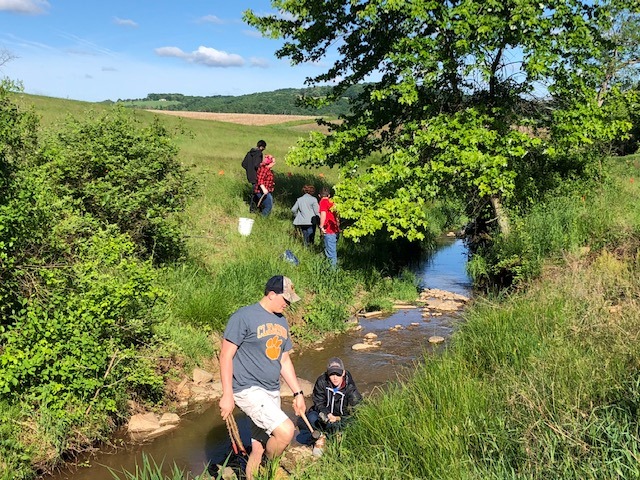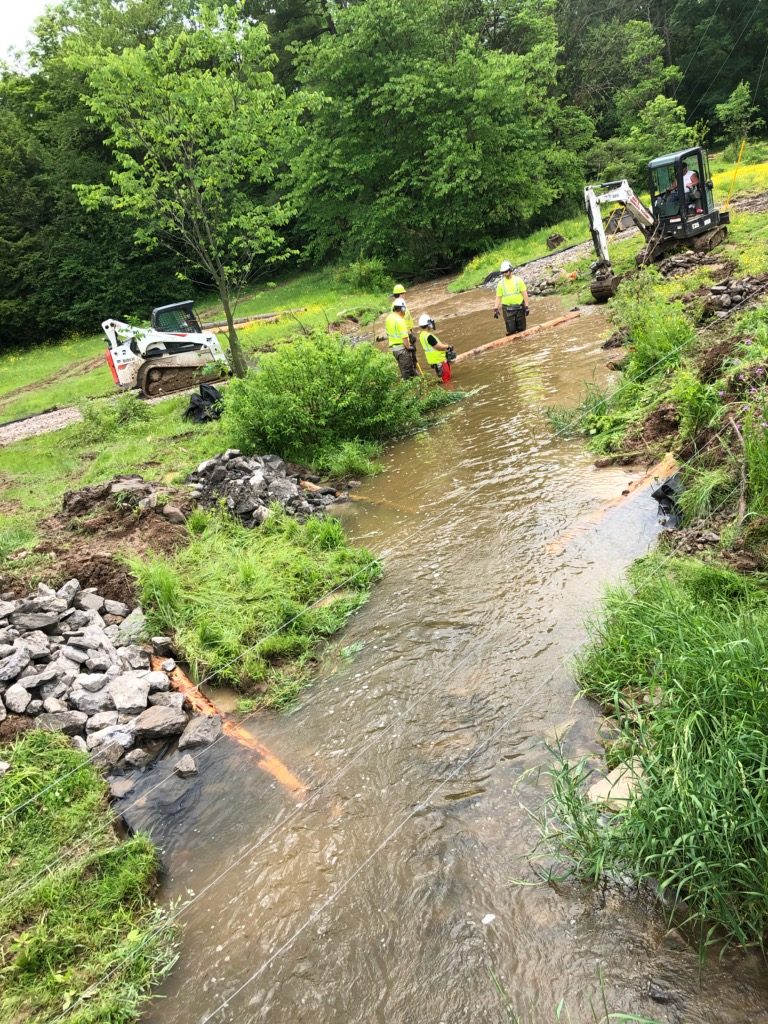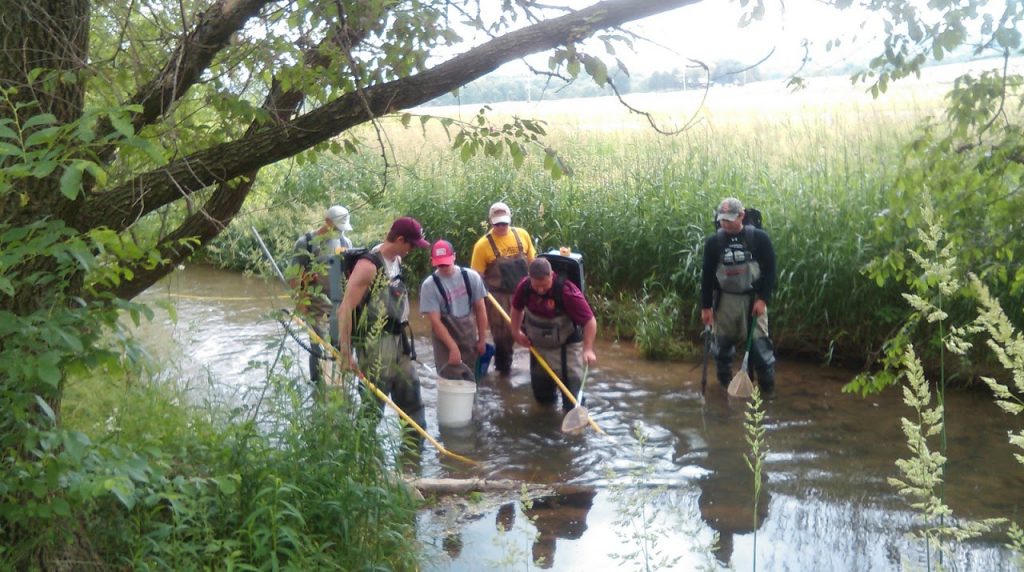By: Nate Stephens, NPC 2019 Summer Intern

Interning with the Northcentral Pennsylvania Conservancy has given me the opportunity to gain valuable work experience within the environmental field. This experience has allowed me to develop my young career as I take the next step into the professional world. Currently, a senior at Bloomsburg University, majoring in Environmental, Geographical, Geological Sciences (or EGGS for short), I have been able to expand upon my education by applying it in the field, observing the roles of different agencies and departments, and networking with numerous professionals. Most of the work I have completed throughout the summer has been with the partnership on stream restoration projects and electrofishing.
From late May to the beginning of July, I worked with Pennsylvania Fish and Boat Commission, Union County Conservation District, and Department of Environmental Protection employees on stream restoration projects. During this time, we were able to complete the John Nolt property, the Griffith property, and the Sabo property.

Each project was unique for work it needed; however, the goal always remained the same. Protect the toe of the slope from erosion and allow the stream easy access to flood plain. By installing the log structures, I got a first-hand experience on how you accomplish the first of these two goals. Certain structures kick water back into the main channel of the stream, while others protect the bank from the direct flow. Some of the structures, like a modified mudsill, serve a dual purpose. They absorb the energy from the current around bends, protecting the bank, as well as provide overhead cover, creating fish habitat. To accomplish the second goal, grading the stream bank is required. This means having an excavator move soil on the bank in a manner where water can go out instead of up during high flows. By giving water immediate access to flood plain, you slow down the velocity, which will limit the amount of erosion that can occur. After we have finished grading a section of stream bank, we will plant a riparian buffer. The roots from the riparian buffer stabilize the soil, which adds another preventative measure to limit erosion. Because of this experience, I learned that both the log structures and grading are equally important. To fully mitigate an impaired stream both aspects of the stream restoration process need to occur.
As I mentioned before, certain log structures create fish habitat. One of the opportunities that NPC offered was electrofishing previously completed projects. I worked with Susquehanna University collecting data on species population and biodiversity. We electro fished two previous projects where we found multiple brown trout. This was cool to experience because these were impaired streams where trout were not found prior to the completion of these projects. Trout are an indicator species for high water quality. To have wild trout, you must have cold sediment free water, lot of dissolved oxygen, and ample overhead cover. The work the NPC and their partnership have done show that stream restoration projects are worth the time and money.

I am thankful for the opportunities and experiences so far this summer and look forward to the remainder of my internship with the Northcentral Pennsylvania Conservancy. Working with the different organizations throughout the summer has made me realize I would like to pursue a career with a county conservation district. This internship has allowed me to gain valuable work experience and network with professionals in that field.

